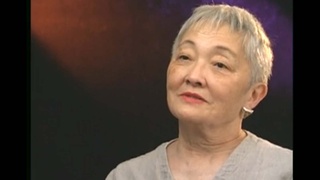Interviews
No WRA Censorship
I* : What's your instruction when going to a camp? Describe what they told you.
Well usually, to photograph groups doing whatever. Some groups were into artistic type of work, paintings, and others. Just everyday life.
I: Everyday life. So, was there any intent to portray camp life in a certain way, or was it open to, “Go out and get whatever.”
It was up to me. To photograph camp life. There was no direction.
I: No agenda, no “Don’t show anything…”
No. None of that.
I: Did you ever find, there was an instance where you took something, but they said, “We can’t really show that?”
No. There was nothing was restricted. Everything was open. Which was good.
* "I" indicates an interviewer (John Esaki)
Date: December 3, 2009
Location: California, US
Interviewer: John Esaki
Contributed by: Watase Media Arts Center, Japanese American National Museum


